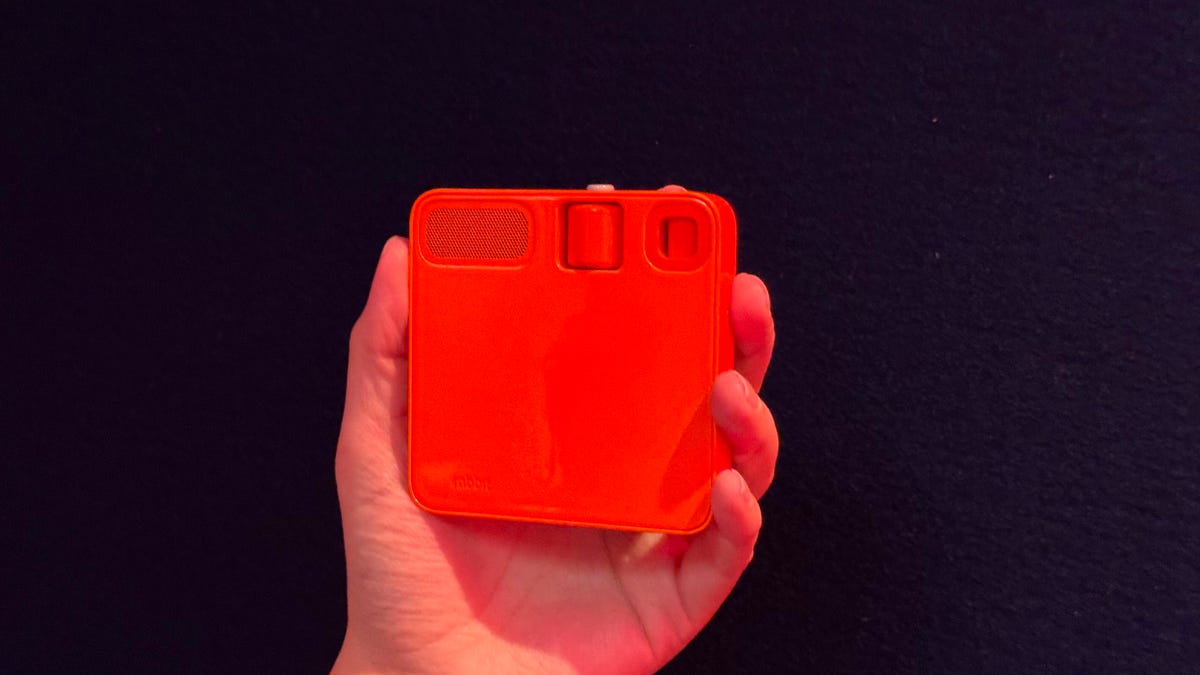Rabbit R1 Unboxing and Exploring What Comes in the Packaging
The Rabbit R1 is a pocket-size computer that's almost like a phone, but isn't. Here's what comes in the box.

The Rabbit R1 is a new type of personal assistant.
The Rabbit R1 isn't meant to replace your smartphone. Rather, it's an AI-powered virtual assistant that wants to do certain things better than your phone.
That's the promise behind the tiny, orange handheld gadget, which I just got my hands on following its splashy launch at CES in January. The first batch of devices just arrived, and now it's time to see if it lives up to the hype.
But first, here's a look at what comes in the box. After I've had time to set it up and tinker with this $199 AI device, I'll have more thoughts to share.
Read more: AI Is Changing Our Phones, and It's Just Getting Started
The Rabbit R1 comes in a cardboard box that's designed to look like a rabbit's face when opened (the ears are on the top, while the eyes and nose are on the back). There are only two things of note inside: the R1 itself and the protective case that comes with it.
Here's what the Rabbit R1 looks like in its case.
The case is meant to look like a cassette tape holder, and it bends backwards to serve as a kickstand. It's part of the Rabbit R1's retro-inspired design. For instance, the hallway leading into the Rabbit R1's launch party was lined with vintage gadgets and toys -- such as the Tiger Electronics Pokedex toy and a transparent Game Boy Color.
The R1's case resembles a cassette tape case.
What I didn't see in my Rabbit R1 box, however, was a charging cable. The Rabbit R1 is powered by a lithium-ion battery like most electronics, so you can use any USB-C cable and power adapter to fuel it up. Still, most devices -- even smartphones, which come in much slimmer packaging than they did in years past -- include a cable in the box, even if there isn't a power adapter anymore.
The Rabbit R1 is about half the size of a smartphone.
The Rabbit R1 is part of a new wave of AI gadgets that started to emerge this year following the success of chatbots like ChatGPT. Unlike the software that powers your smartphone, the R1 runs on an operating system fueled by what the company calls a "large action model," a nod to the large language models of text-based AIs. That means the software is trained to learn how to use apps and services the way humans can, so you shouldn't have to manually operate apps to get things done, according to the company's claims.
The Rabbit R1's launch comes after the release of another buzzy AI-powered device, the $699 Humane AI Pin, which also aims to decrease our reliance on phones. The high-tech wearable was generally poorly received, however. Reviewers were skeptical of these unfamiliar AI devices, which seek to supplement -- or in some ways replace -- your phone.
I'll be documenting my experience with the Rabbit R1 over the coming days, so I'll have more to say about it once I've spent more time with it.
Editors' note: CNET used an AI engine to help create several dozen stories, which are labeled accordingly. The note you're reading is attached to articles that deal substantively with the topic of AI but are created entirely by our expert editors and writers. For more, see our AI policy.

